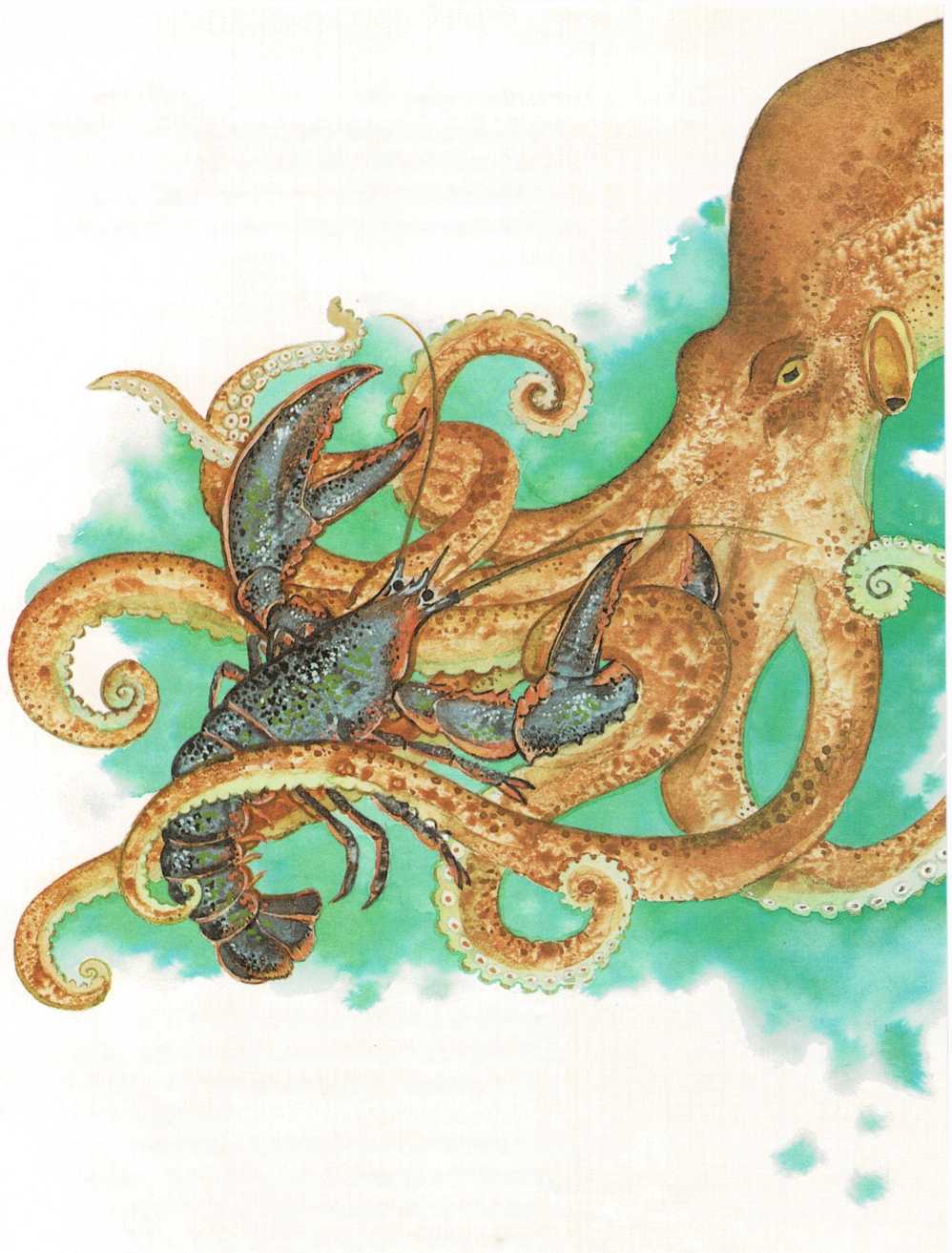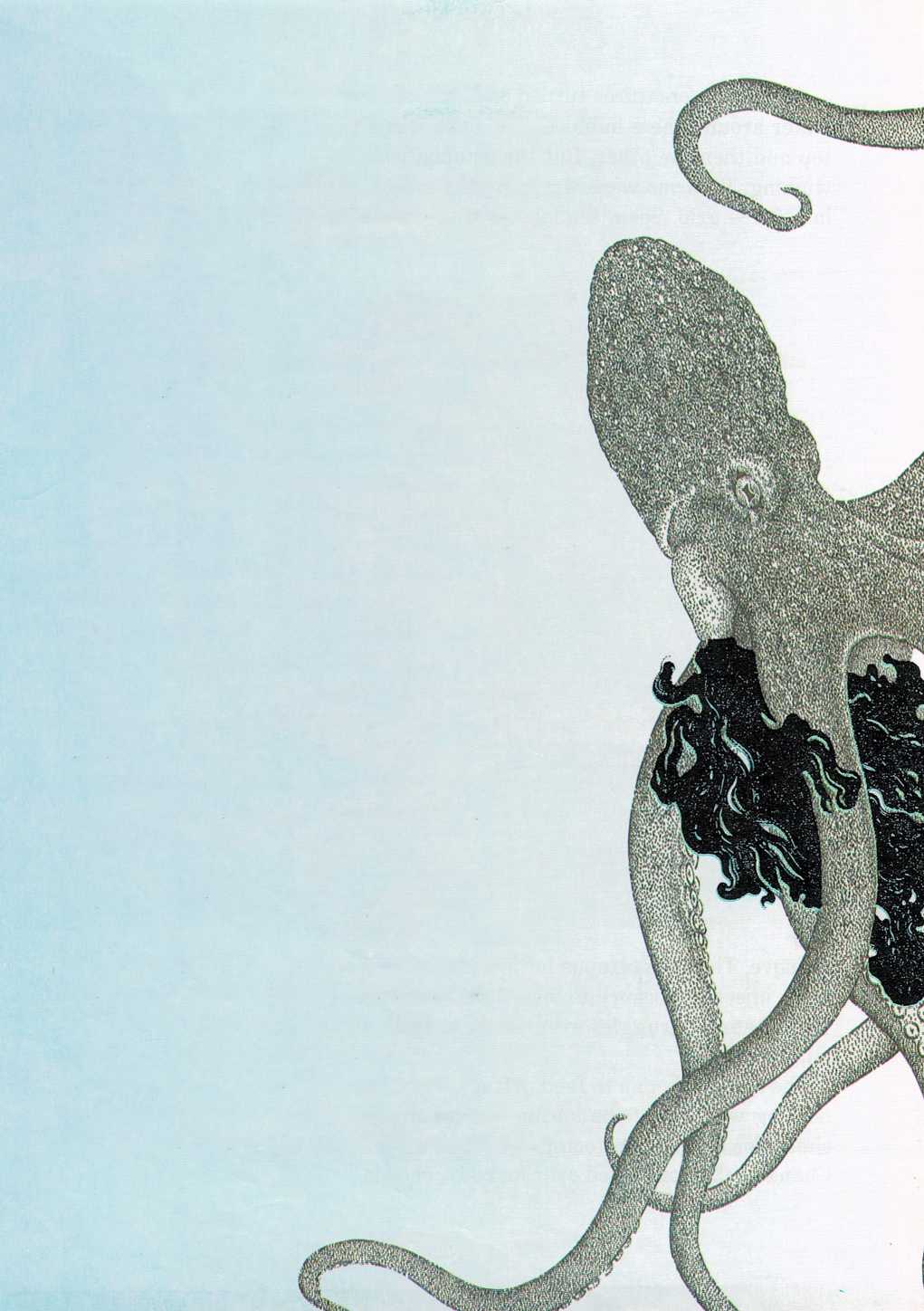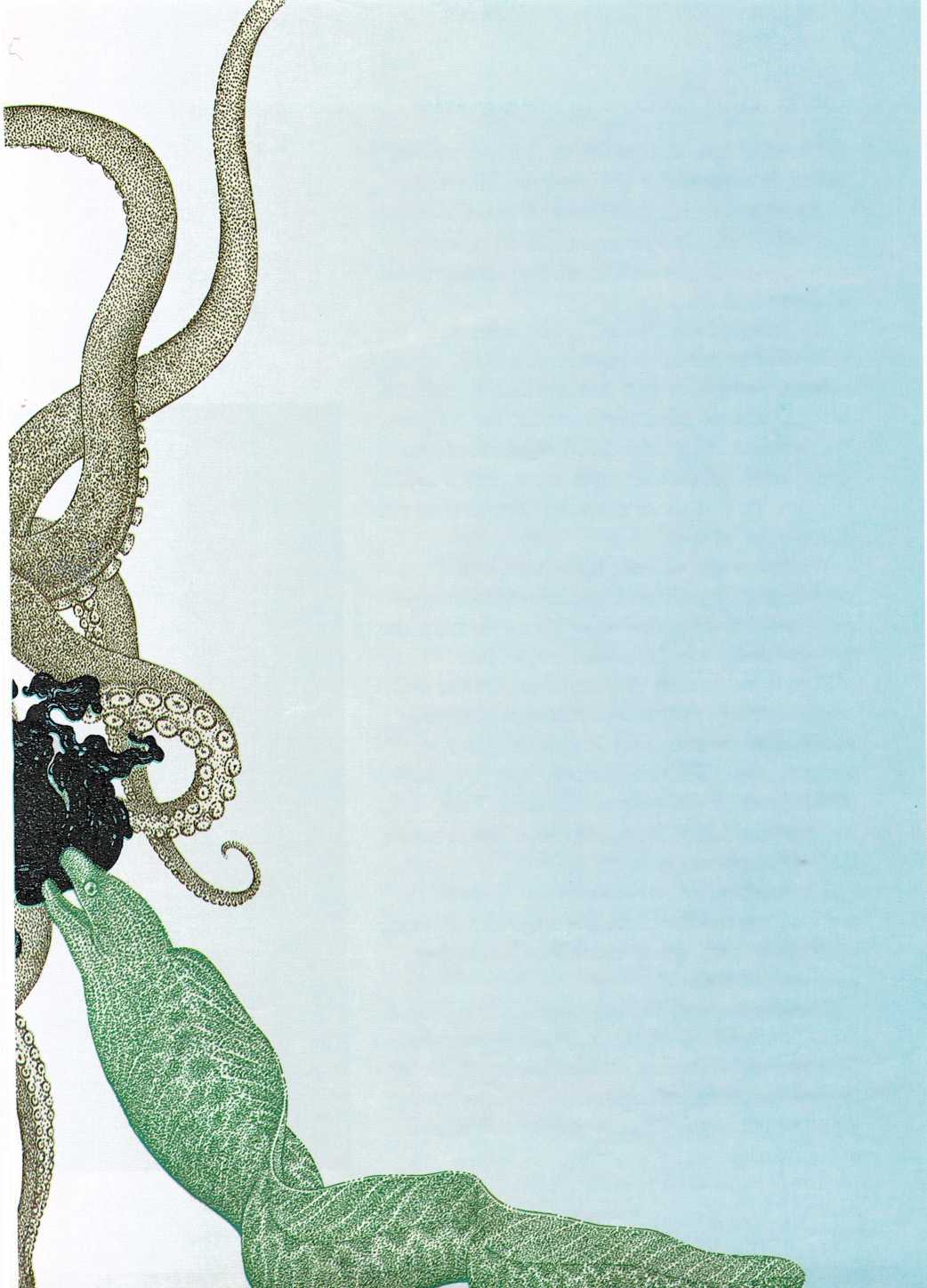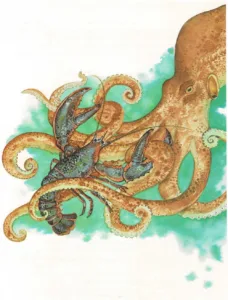A many-armed “monster”
The sun was setting over the ocean, and the sky was a blaze of pink,
orange, and purple. As the big red ball slowly dropped out of sight, the
bright colors faded and the sky turned blue-black. Night fell upon the
sea.
On the sea bottom, near shore, a creature lay hidden among a cluster of
rocks. It had lain there most of the day. Its rough, bumpy body looked
so much like the rocks that no passing animal noticed it. Now, as the
water grew dark, the creature left its hiding place.
The creature had an egg-shaped body, round, staring eyes, and eight
snakelike arms. The undersides of the arms were covered with two rows of
round, white suckers. Each sucker was much like the suction-cup on a toy
arrow. The creature was an octopus.
The octopus crawled easily over the rocky bottom. One or more of its
snaky arms would glide forward, the suckers gripping the ground. Then
the creature would pull its body forward. It moved quite quickly.
The octopus was hunting. After a time, it met a large lobster that was
also looking for a meal. Lobsters do not eat octopuses. But,
unfortunately for the lobster, octopuses do eat lobsters.
Like a pinwheel of waving arms, the octopus attacked. It tried to
quickly wrap all eight arms around the lobster. But the lobster was a
fighter, and could defend itself. One of its strong claws bit hard into
the octopus’s soft body. The other claw clamped viciously onto an arm. A
person gripped by those pincers would have howled with pain!

As the two creatures turned and twisted, the water around them
bubbled. First one was on top and then the other. But the octopus was
winning. Its arms were wrapping the lobster in a fierce grip. Soon,
the lobster was unableto move. Then the octopus bit into the lobster’s head, injecting
poison into the helpless creature. The lobster’s struggles grew
weaker, and finally stopped.The octopus began to feed. After a long time,
nothing was left of the lobster but an empty shell. For a while, the
octopus did not move. Changes of color flowed over its body, showing

that the octopus was content and satisfied. After a time it began to
crawl back to its hole in the rocks.Suddenly, the octopus froze. Something was moving swiftly toward it
through the water. A long, snakelike shape. It was an eel, an
octopus’s deadliest enemy.At once, the octopus squirted out a cloud of thick, black ink that
hung in the water. At the same instant, the octopus shot up and off
through the water. It swam backward, by sucking water into its body
and squirting it out through a special tube under its head. This jet
of water pushed the octopus along swiftly. To help it move more
quickly, the octopus brought all its arms together, so that its body
took on a streamlined shape.Following the smell of the octopus, the eel went straight into the
inky cloud. Moments later, it began to swim about slowly, as if
puzzled. An eel hunts mainly by smelling out its prey, and the ink
contained a chemical that dulled the eel’s sense of smell. The hunter
could no longer follow the scent of its prey. The eel turned away, and
the octopus returned to the safety of its den.There are about 50 different kinds of octopuses. The smallest kind,
with all its arms stretched out, is only about two inches (5
centimeters) across. The largest known octopus covered a circle about
thirty-two feet (9.6 meters) wide. But most octopuses have a body
about the size of a man’s fist, and arms that are about a foot (30 cm)
in length.The name octopus comes from two Greek words that mean “eight feet.” An
octopus has

no bones, and its body is so soft and rubbery that an octopus can
squeeze into very small places. It has hard, strong jaws that look
like a parrot’s bill. It breathes with gills, has three hearts, and
blue blood. And if an octopus loses one of its tentacles, it can
grow a new one.An octopus has many tiny bags of color beneath its skin. Muscles make
these bags swell up or shrink, and this causes the octopus to change
color. It can become blue, brown, gray, purple, red, white, and even
striped or blotched. These color changes are usually caused by things
the octopus sees. And, as an octopus moves about, its body takes on
the color of the sand or rocks around it.A female octopus lays 150,000 or more eggs. After the eggs are laid,
the mother spends all her time cleaning them and caring for them. She
does not even take time to eat. So, by the time the eggs hatch, after
about three months, she usually dies.Octopuses are intelligent. They can learn things and even figure some
things out. One octopus figured out how to take a cork out of a jar.
Some scientists and divers have actually made friends with octopuses.
The octopuses learned to recognize the people. Sometimes the octopuses
would even reach out with an arm and stroke the people gently and
lovingly! Although the bite of some octopuses is harmful, these
animals are quite timid. Usually, they run away or hide from people.An octopus seems a strange and frightening creature—a many-armed
monster. But it is just another kind of animal trying to survive in a
dangerous world.

